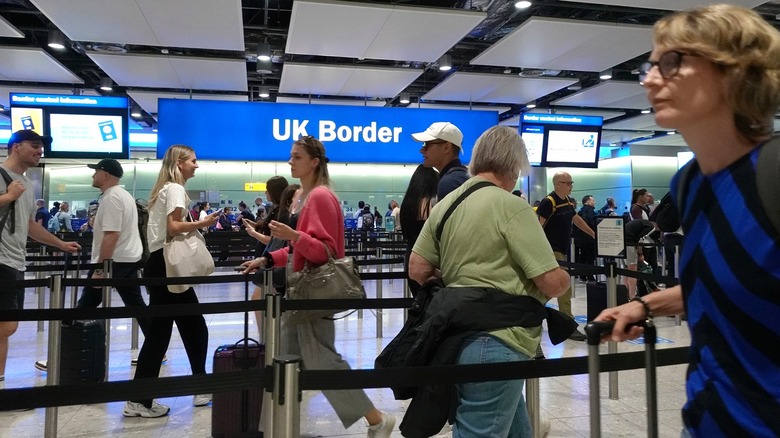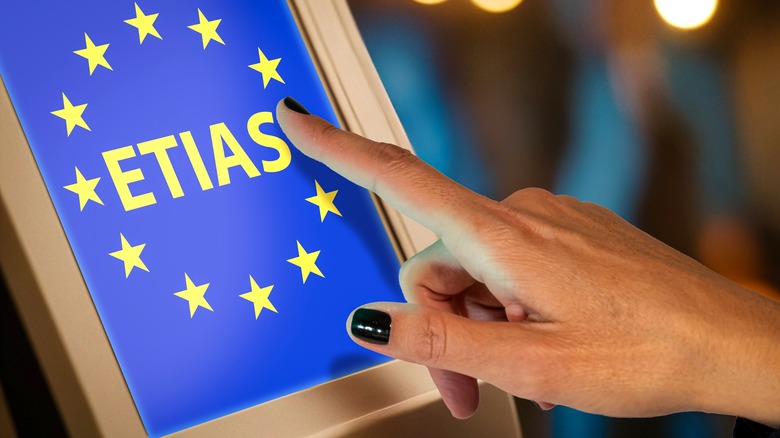The New Requirement That Affects Travelers Entering Europe In 2025
Any American who has entered the United Kingdom in recent years knows the drill. You join the line, hand your passport to a border agent, and answer any questions they may have, namely the purpose and duration of your visit. After that, you're free to enjoy everything from the classic English "fry up" to the beautiful British coastline and the country's oldest and most underrated cities.
However, entry requirements change on January 8, when Americans and other eligible non-Europeans must purchase an Electronic Travel Authorisation (ETA) to visit the United Kingdom. ETAs are for those visiting the UK for up to six months for tourism, business, visiting family and friends, and short-term study, such as the three-month Creative Worker visa concession. An ETA is also necessary for those who transit through the UK without passing through border control.
To get an ETA, you can apply online or via the UK ETA app, which is supposedly the fastest method. You will be asked to upload your passport, a photograph of yourself, and your name, address, phone number, nationality, employment details, and travel intentions. All eligible travelers require an ETA — including babies and children — and must apply separately, although applications can be made on others' behalf. When an applicant has provided all necessary information and paid the £10 ($12.50) fee per person, they should receive confirmation within three working days. Once approved, the ETA is linked to your passport and lasts for two years. If you get a new passport, you will have to reapply for the ETA.
It's coming to continental Europe, too
The ETA is similar to the American ESTA (Electronic System for Travel Authorization), which costs $21 and is mandated for US-bound travelers from Visa-exempt nations such as the United Kingdom, Australia, New Zealand, Japan, South Korea, and the European Union countries, the latter of which are set to implement their own system by mid-2025.
Like its American and British counterparts, the European Travel Information and Authorization System (ETIAS) is a permit for short-term travel. If approved, applicants are entitled to a 90-day stay, which is the same as the American ESTA. However, the ETIAS only allows 90 days within a 180-day period. So, if you visit Europe for the full 90 days, you will have to leave and wait another 90 days until you can return. This is stricter than the British ETA, which entitles travelers to six-month visits and does not automatically bar entry to those who leave at the end of their six-month stay and return a short while later, although that could potentially arouse suspicion at the UK border.
Despite that, there are several advantages to the ETIAS over its peers, namely its price — it costs €7 ($7.26) — and its duration, which is three years rather than two. It also grants access to the European Union's Schengen Zone, a border-free area comprised of 29 countries. Once ETIAS-approved visitors have passed the EU border, they can roam the Schengen Zone as if it is the United States of Europe, although there may be occasional police checks at some national borders.

